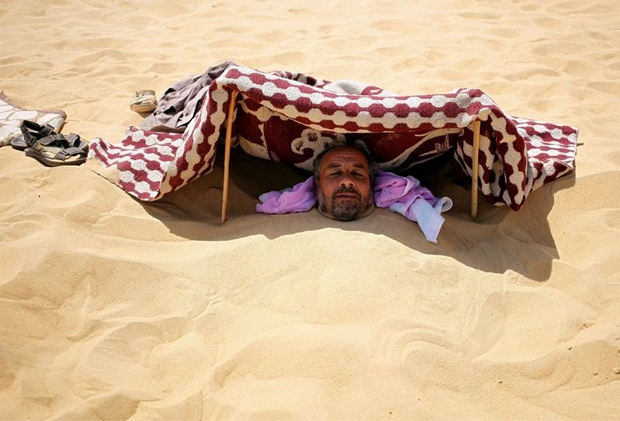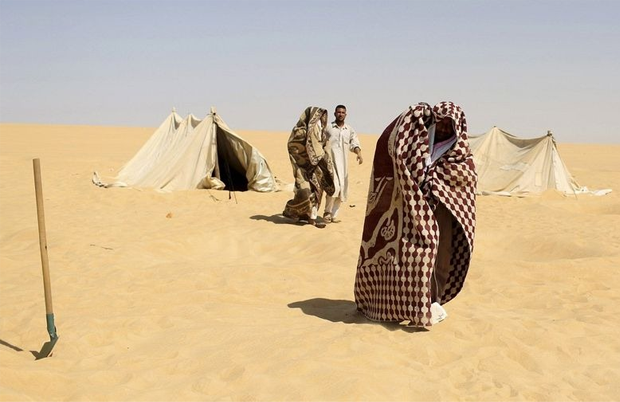|
Between July to September, during the hottest months
of the year when temperature hovers around 37 degrees in the shade,
people from all over Egypt and elsewhere flock to the desert oasis town
of Siwa in the Libyan desert in western Egypt to take turns at being
immersed in scalding hot sand for up to 15 minutes at a time.
|
|
 |
|
Local doctors, as well as those who underwent the treatment, claim that
just three to five days of regular sand bathing can cure sufferers from
rheumatism and arthritis, and even infertility or impotence.
Sand bathing is a traditional treatment developed by the Berbers of this
isolated settlement near Dakrror Mountain, about 50 km east of the
Libyan border, and 560 km from Cairo.
|
|

|
|
The treatment beings around midday when the sun is at its highest
position in the sky and the air is as hot as it can get.
Patients are taken to a designated spot in the desert where they take
off their clothes before an experienced Siwan buries them in a sand pit.
After ten to fifteen minutes they are dug out and quickly moved to a
nearby tent which has been exposed to the sun so they act like saunas.
|
|

|
|
After the desert treatment, patients are taken to a
house to cool down and change into fresh clothes before dinner.
The treatment last between three to five days during which they are not
allowed to shower or allow cold air onto their skin. |
|
 |
|
They also take only hot drinks and hot food. On the last day of the
treatment, patients get a relaxing massage with oil and vinegar to help
close the open pores.
|
|
 |
|
The treatment costs about 300 to 400 Egyptian pounds ($38 to $51) per
day, which includes accommodation and food.
|
|
 |
|
Before the 2011 uprising that toppled Hosni Mubarak, many foreign
tourists came to experience sand bathing, but the recent political
turmoil and attacks by Islamist militants have kept many tourists away
from Egypt.
|